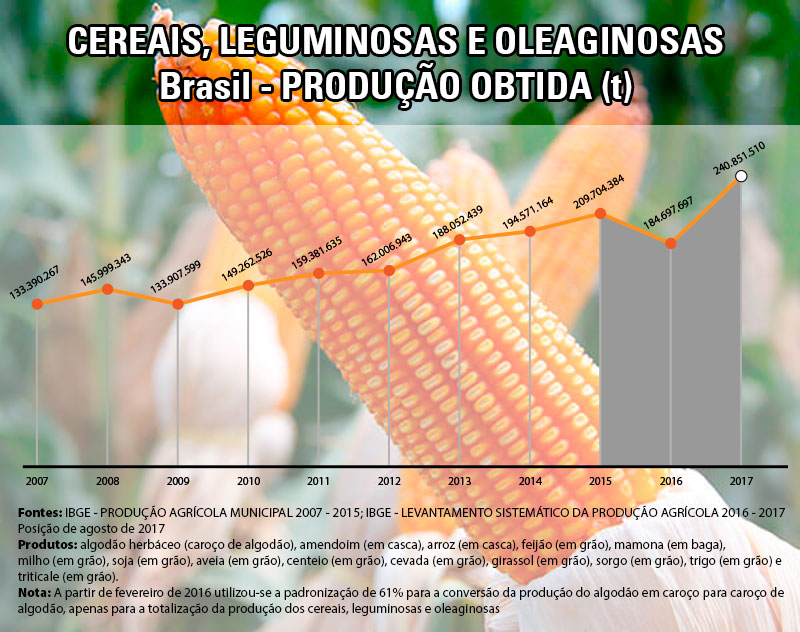Forecast of grain crops down 0.5% in August, but still a record
September 12, 2017 09h00 AM | Last Updated: September 22, 2017 01h49 PM
The estimate of August for the national grain crops in 2017 had a decrease of 0.5%, which represents 1.2 million metric tons less than the production forecast in June. More than half of this drop - 829 thousand metric tons - correspond to the estimate review for the second crop of corn, especially in the State of Goiás. Wheat and soybeans also had their estimates revised down in relation to July.
However, the national crop forecast still is a record: 240.9 million metric tons, an increase of 30.4% in relation to 2016, leveraged by the record crops of soybeans (115 million metric tons) and corn (98.4 million metric tons), according to data from the Systematic Survey of Agricultural Production, released today.

IBGE researcher, Carlos Antonio Barradas, explains that the impacts of the crops Brazil is harvesting are very positive both for domestic and the foreign markets. In the domestic market, the record crops this year have contributed to the reduction of inflation, as reported by the IBGE in the dissemination of the Extended National Consumer Price Index (IPCA) and of the Gross Domestic Product (GDP) of August.
In IPCA, the beginning of the harvesting period exerted an impact in the deflation of prices in the food sector, with a highlight to the price of carioca beans, an important item in the Brazilian daily intake, which decreased 14.86%. In the GDP, agriculture had an important participation, with a 14.9% growth in relation to the second quarter of 2016. This result can be explained, mostly, by the performance of some products that have a relevant crop in the second quarter and by the productivity, according to the Systematic Survey of Agricultural Production (LSPA) of August.
In relation to the foreign market, soybean exports hit a record. Just in August this year, six million metric tons were exported, 56% more than in August 2016. Besides, Carlos Antonio Barradas explains that the lower prices of soybeans and corn favor the production sector of chicken meat and pork, which are also important in the country's export profile. "The greater production value also benefits the transportation sector (freight) and the industrial sector involved with the manufacturing of these goods."
Text: Marília Loschi
Image: Pedro Vidal
Photo: Pixabay



















